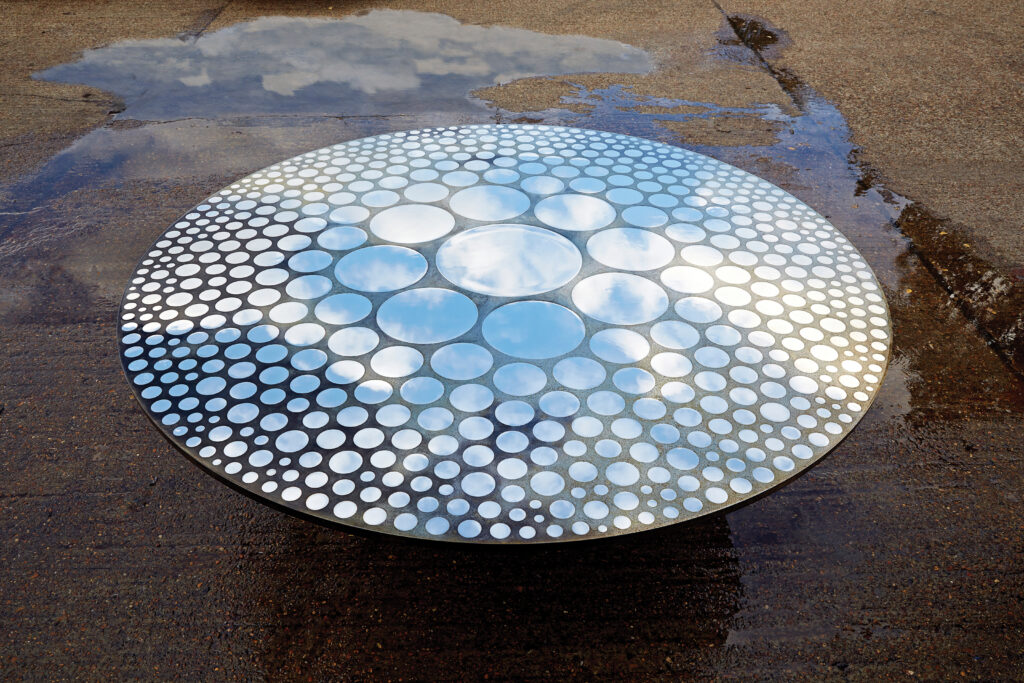
In the global furniture movement of the 21st century, British designer Paul Cocksedge (b. 1978), co founder of Paul Cocksedge Studio is a major player, known for his elegant, minimal, and exciting objects born from a strong passion for materials, where boundaries are pushed across the board, where complex, out-of-the-box engineering marvels are the tools of realization, and where craftsmanship exceeds levels hitherto unknown. It is certainly no wonder he has become so influential. Cocksedge burst into the world of design at the right moment of transformation, when furniture emerged as the powerful, charismatic, influential entity we know today. Attending the Royal College of Art, where the curriculum was essentially invented for him by the first generation of the furntiure movement. He graduated in 2002.
Hosting Cocksedge in series, ‘Furniture Design: Then and Now,’ introduced a certain level of energy and excitement to the audience. In his work and persona, he reminded us that furniture has a tremendously prolific and charismatic presence in our culture, that it is ‘cool’ to be a furniture designer, that infusing furniture with narrative is an intellectual pursuit, and that his method is a viable path to designer ‘stardom.’ His Instagram is one of the most successful and exciting feeds in the world of design, and it has brought him to a position of influence, while his brilliant video features have made design enthusiasts of millions across the globe. Significantly, the live conversation with Cocksedge demonstrated that we are privileged to be witnessing an exciting moment in design history.
I was introduced to Cocksedge’s work when it was first exhibited at Friedman Benda‘s inaugural solo show titled ‘Capture’ in 2013. I still remember what struck my attention back then. While the objects were minimalist, they were also dramatic, powerful, and energetic. He says that this dual character mirrors his personality. ‘Capture’ is also the title of his hand-wrought dome light, which is essentially a glow of warm and calming light, in which he sought to remove all recognizable signs of lighting, such as wires, bulbs, and rather to achieve one ‘volume of light’ in his words, where he stimulated people’s interactions, and made them more engaged with the object. Alongside was also the exhibition ‘Poised Table,’ another strikingly minimalist object made of a half-ton of steel, where he tested notions of gravity and mass. While inspired by a piece of bent paper, here, too, the element of surprise is particularly apparent, because, while the table is extremely heavy, it looks as light and delicate as a piece of paper. Every project, Cocksedge explained, takes years to realize, from inception through experimentation and research, to its final realization. At the core of his objects are innovative, sometimes intellectual, design-thinking concepts. To realize his Slump series, for example, Cocksedge had to engage various companies in complex logistics across the UK for various processes – reheating, toughening, shaping, polishing – each process taking place in different workshops.
Cocksedge loves speaking about his years as a student at the Royal College of Art (where he attended after graduating from design at Sheffield Hallam University), where his professional identity was shaped. Studying under his mentor, Ron Arad (who taught Design Product from 1997 until 2009), was crucial to his evolution as a designer. Through Arad, Cocksedge experienced the design world in its transformative moment when art and design merged like never before. He attended Arad’s exhibitions with his fellow students, where some of the most prolific objects, which he calls ‘timeless,’ were created. He views witnessing the transformation from ideas and concepts of his teacher to a final, rendered work of art the best lesson anyone can get. Cocksedge knows that making of objects where mechanics and engineering have pushed boundaries, ‘will never fade away.’ His graduate project, ‘Styrene’ of 2002, a chandelier made from heated polystyrene cups, revealed the influence of Arad who calls him one of the most talented students he has ever had, and marked the point of departure for his eternal journey into the world of materials.
Cocksedge gained tremendous fame with his Instagram feed, which is no less creative than his own designs. He features video clips where his design thinking and processes are captured in the most dynamic way and calls them ‘moments of interaction.’ He has become fascinated by the power of social media and is a significant player in this arena. Authenticity, he feels, is the only way to succeed in the world of social media. He perceives Instagram as a way to express his own identity because it is the designer’s role to create his own story on social media, and any attempt to hire someone else to do that would result in an inevitable disconnection. Social media has brought his work far beyond the regular crowd who attend Basel, Miami, and Milan, and which he has come to learn is a mere sliver of the potentially enormous audience, opening up almost endless opportunities.
Cocksedge’s work has a solid connection to the material world. Why does a designer have to experiment with materials and find new ways to use them, to push materials and processes,?’ I asked. ‘Materials,’ he says, ‘are the matters of bringing ideas to life,” and therefore, he seeks to work with materials in a way never done before, to shape materials in his own personal, unique way, to insert materials with his own identity. Precious objects are born from precious ideas, and amazing work with materiality, imposing new directions on materials. Paul Cocksedge is a most elegant designer, and the objects he creates are magical. In his hands, the most complex objects look like a stroke of the brush created on the painter’s easel. In today’s world of design, Cocksedge is clearly a star player.





